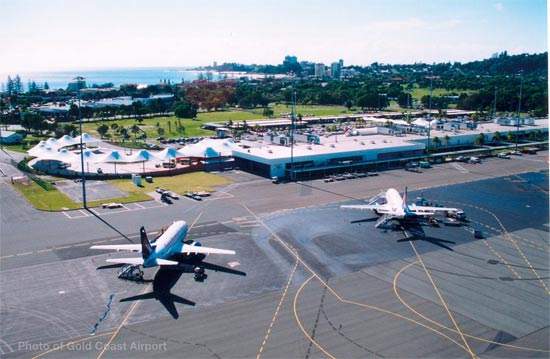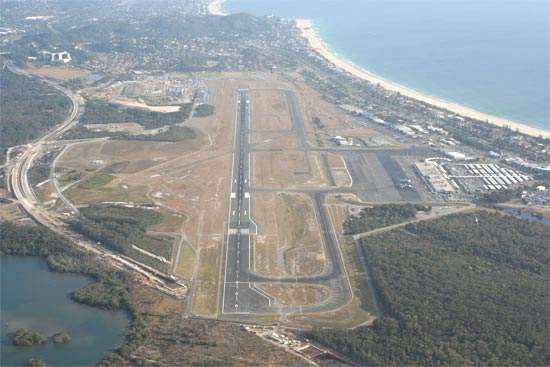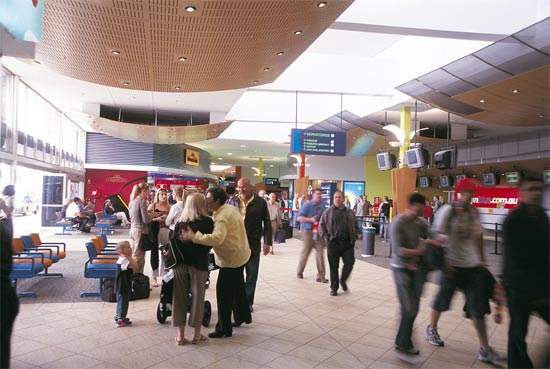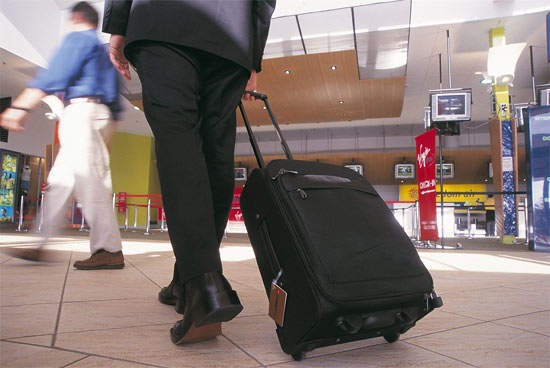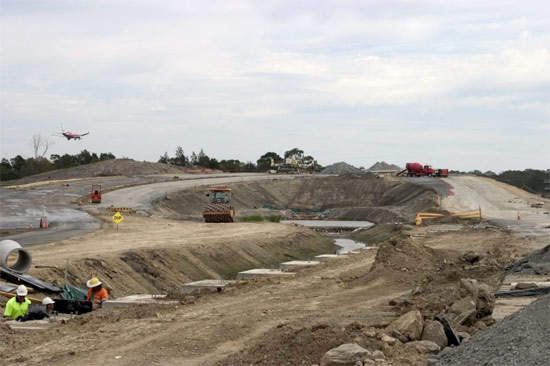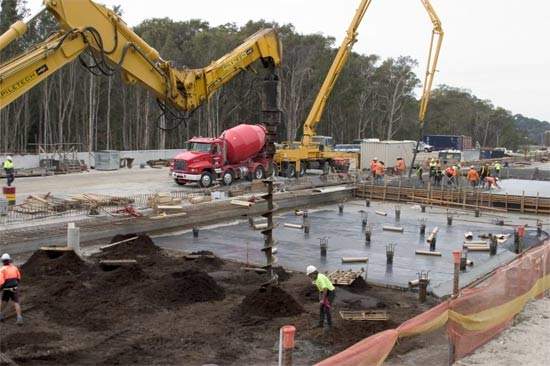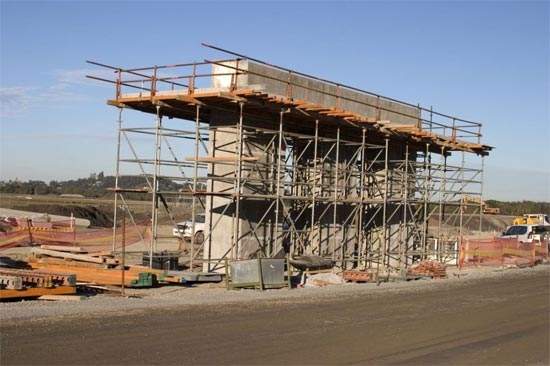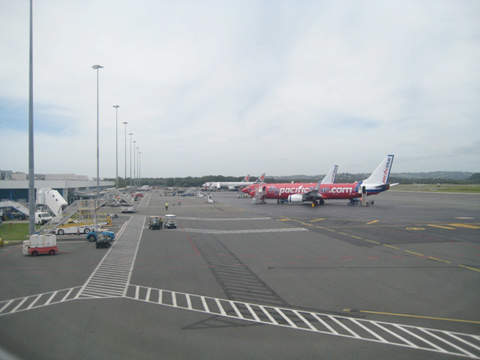Gold Coast Airport, a wholly owned subsidiary of Queensland Airports Ltd, serves the tourist-focused Gold Coast near Coolangatta on the eastern coast of Australia, approximately 80km south of the Queensland capital, Brisbane.
The name was changed from Coolangatta Airport to Gold Coast Airport in 1999, reflecting its privatisation in the previous year and a boom in tourism, including corporate and business travel, to that area.
The Gold Coast and nearby northern New South Wales are known for their sunny, sub-tropical climate, beaches and associated extensive resort developments.
The airport primarily serves a region extending from Beenleigh in the north to Ballina in the south. Leisure-based travel is estimated to account for 75% to 80% of all its regular public transport traffic. Principle shareholders are Hastings Fund Management and Perron Investments.
The airport, the seventh busiest in Australia, is continuing to grow rapidly, having completed an A$100m terminal redevelopment in January 2010. The A$25m runway extension opened in May 2007.
Master plan for the Gold Coast Airport
A 2011 preliminary draft master plan was unveiled by the Gold Coast Airport in September 2011. The master plan details the passenger traffic growth and upgrade facilities required to cater this growth.
It also involves development of the airport facilities in next five years. The airport is anticipated to experience 16.3 million passenger movements by 2031.
Gold Coast Airport facilities
Gold Coast Airport is 6m above sea level. The recently extended main runway is now 2,492m x 45m (extended from 2,042m) and lies within a 2,552 x 150m runway strip.
A full-length parallel taxiway was also added. The extension opens up opportunities for more direct routes into Asia and increased freight handling.
An intersecting secondary runway is 582m x 18m in a 672m x 90m runway strip. Access to the main runway is offered by a parallel taxiway over 2,000m of its length, plus 506m of parallel taxiway for light aircraft only. The main apron accommodates nine B737s or A320s or two wide-bodied airliners and five B737 or A300s.
Room is available on one apron for two planes of B737 size or six corporate-type aircraft. A further 3.8ha of sealed apron is available for light planes. The airport has runway and taxiway lights, T-VASIS, RTILs, VOR, NDB, DME (I) and terminal area radar.
Since 1990 the airport began to carry international flights. In 2000, the A$1.2m undercover long-term car park was added and an A$2m international terminal opened.
The old Ansett domestic terminal was converted into a leisure and entertainment zone. The car park was further extended to more than 1,000 spaces in 2006 and terminal two expanded, with more shops and dining options added.
Gold Coast Airport is also home to flying schools, light aircraft maintenance companies, joy flights, charter flights and it boasts joint user hydrant installation and aircraft refuelling facilities. Gold Coast Airport recently upgraded its ground transport provider facilities and deployed a new ground transport licensing system.
Visitors can choose from two cafes, a bar that also serves meals, souvenir store and a newsagent. Internet facilities (but not wireless) are also available.
Control tower at the Queensland international airport
The control tower was set up at the airport in 1990.
Air Services was awarded a $2.3m contract in September 2011 to overhaul and upgrade the control tower at the Gold Coast airport. The contract was signed as part of the programme which involves renovation of 28 operational air traffic control towers across Australia.
The scope of work includes replacement of the obsolete mechanical and electrical fire and security services and installation of new eco-friendly and efficient systems. The renovation will increase the life of the control tower by 20 years.
Work will begin in October 2011 and is scheduled for completion by February 2012.
Traffic figures and passenger numbers
Gold Coast Airport serves four Australian destinations directly – Sydney, Melbourne, Adelaide and Newcastle. The Gold Coast to Sydney route is the fourth busiest in Australia, with 150 flights a week. The airport recorded 133,290 flight movements in 2010.
In September 2007, Gold Coast Airport hosted five airlines – Australia’s Qantas, Jetstar and Virgin Blue, plus two from New Zealand: Freedom Air and Pacific Blue. Freedom Air and Pacific Blue fly to four overseas destinations from Gold Coast Airport.
AirAsia X, the new longhaul arm of Asian budget carrier AirAsia, began flights from Gold Coast Airport to Kuala Lumpur on 2 November 2007, while a Melbourne-based Singapore-headed joint venture budget airline, Tiger Airways, also began flying from Gold Coast Airport in November.
The cumulative passenger traffic hit 5.17 million during 2009-2010. Airport expansion construction on Gold Coast Airport’s A$100m terminal redevelopment began in August 2008, in conjunction with an upgrade to the car parking and passenger facilities. The terminal redevelopment was completed in January 2010.
During the redevelopment, Qantas Groups Airlines, Qantas and Jetstar operated from the south end of terminal one. All other carriers located in terminal two, operated from the northern end.
The whole terminal has been redeveloped as a single shared facility. An extension to the airside of the current building and the renovations were completed as part of the programme.
The project doubled the size of the terminal to about 30,000m². An agreement was signed between Qantas and Gold Coast Airport in 2007 allowing the whole terminal to be used as a common user facility. The project was completed in less than two years.
Paul Donovan, chief operating officer at Gold Coast Airport, said redevelopment would boost passenger facilities, such as retail. In addition, upgrades to security systems have been flagged, including 100% check bag screening for domestic and international services, in line with current legislation, and a single central passenger screening point to accommodate and encourage the smooth flow of passengers and visitors alike.
There is a single check-in area for all airlines with 36 check-in desks and common self-service kiosks as well as one main departures and arrivals area. After passing through the security screening there is a large retail area and food court, there is also self-contained apartments for some passengers along with a convenience store, a prayer room and baby-change facilities. Other developments include a new Rainbow Ale House, a 30% increase in duty free area, a new area for meeters and greeters, a larger oversized baggage area and several additional currency exchange kiosks.
The expansion design maximises views across the runway and functionality, creating a ‘light and airy feeling with bright colours’ to reflect the leisure industry of the area.
To this end there are open high ceilings with two storey floor-to-ceiling glass windows. More space has been provided for transfers and passenger handling, improved and expanded retail and dining areas and comfortable amenities for patrons.
Environmentally sustainable design elements were incorporated where feasible.
Future plans
New terminal facilities should cater for seven million passengers by the end of the decade and, hopefully, cope for another ten years after that, Donovan said.
The airport company had signed a deal with national carrier Qantas Airways to facilitate the redevelopment.
In April 2008 work on the terminal project began with preliminary tarmac and drainage work involving the movement of tarmac apron lighting and moving sewer, storm water and electrical power lines.
Also starting in April 2008 was the new water-wise landscape plan worth $900,000 to install lush native plants across the entire airport to provide shade and areas of rest.
The construction work began properly in July 2008. The contract for the design and construction work was awarded to ADCO Construction in October 2007.

